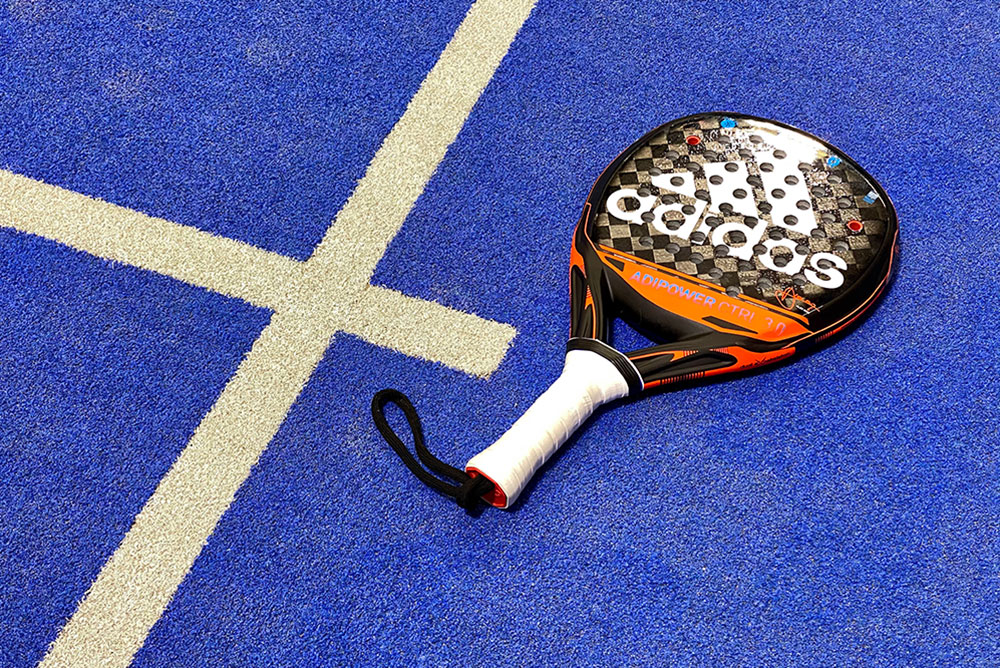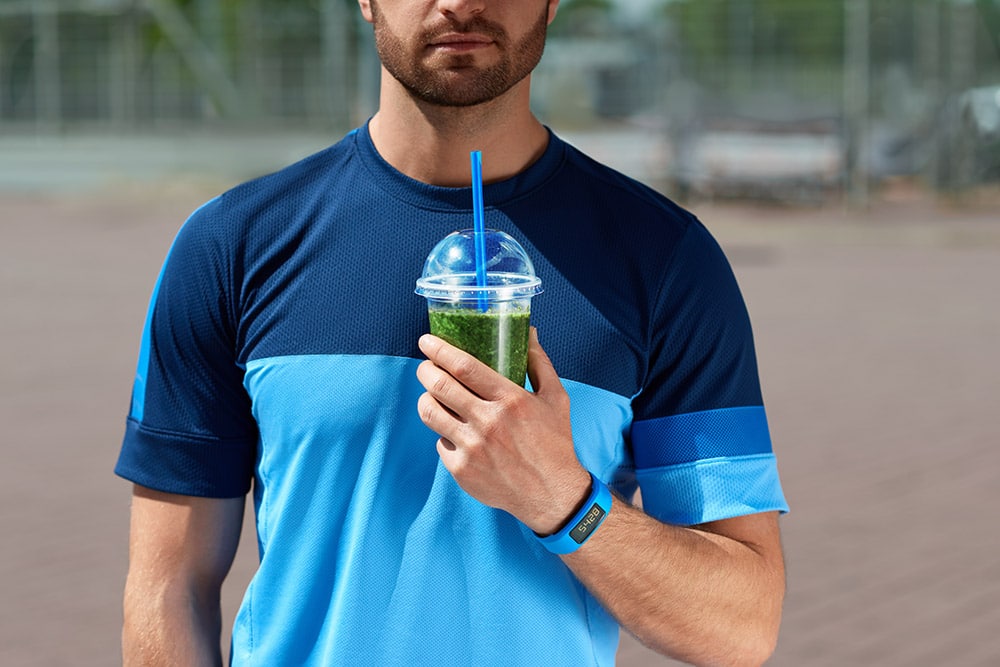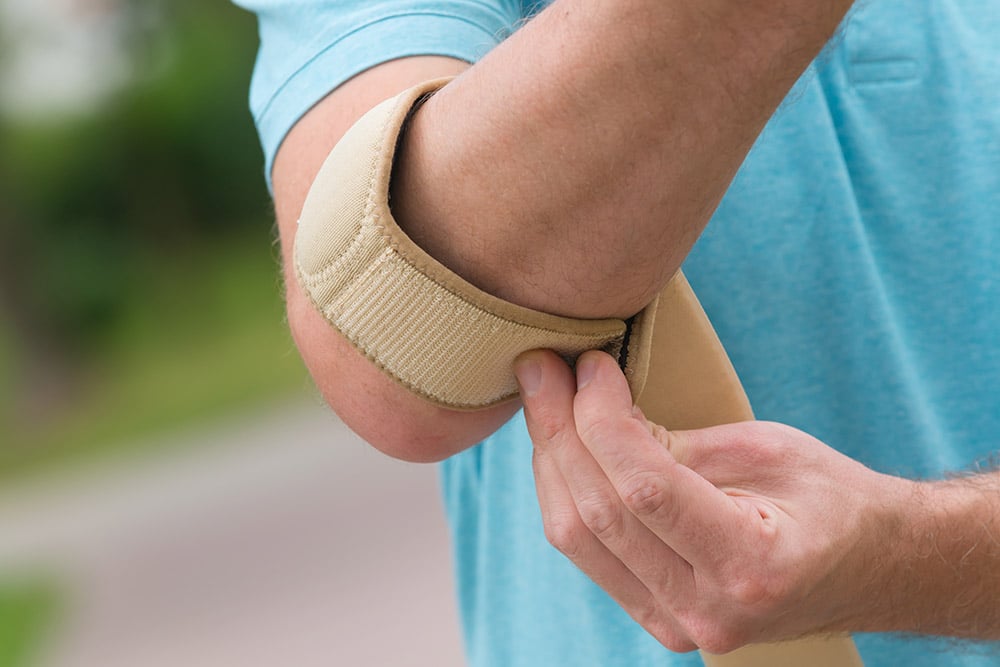Tennis elbow (lateral epicondylitis) is a common issue that affects many people who play padel tennis. It’s a painful condition that can be frustrating and take the fun out of playing. Even worse, it can even bring your padel playing days to a grinding halt. Here are some tips and tricks for avoiding tennis elbow and staying in the game.
Tennis elbow – A common problem in padel
As padel tennis is growing as a sport, so is the number of people suffering from tennis elbow.
Tennis elbow is a painful condition where the nerves between the elbow and the hand become inflamed. The area affected is known as lateral epicondylitis. The term tennis elbow is used when you feel a sharp pain in your elbow after playing tennis or padel. Often the pain is more intense and prolonged than the pain from the usual muscles aching after a game. Tennis elbow symptoms are usually more aggravated during a match.
The causes of tennis elbow
There are several reasons for tennis elbow. The most common cause of tennis elbow is repetitive injury to the tendons of the hand. Doing the same thing repeatedly, especially if it is an activity that requires a lot of wrist rotation, the tendons get overstretched, which leads to tennis elbow. The main parts involved in this condition are tendons, muscles, and ligaments.
1. Change your padel racket
Changing your racket can go a long way in preventing injury. While holding a racket at any form of strain can cause problems for your elbow, certain types of racquets are more harmful than others.
For example, diamond-shaped padel rackets are usually more top-heavy, putting stress on the elbow and hand and increasing the risk of leading to tennis elbow (Tendonitis).
So, which padel racket is best for avoiding tennis elbow? Opt for a light, soft racket with a round shape. A lighter racket means better maneuverability, and a soft core is better at absorbing vibrations.
Check out our buying guide Best Comfortable Padel Rackets 2021 to get racket recommendations. We also recommend the article Choosing a Padel Racket – The Utlimate Guide.

2. Increase the grip size
Playing padel with the wrong size grip can have a negative effect on your elbow and overall performance.
Playing with a too-small grip is dangerous because it takes more gripping strength to prevent the racket from turning in your hand. One of the most common causes of tennis elbow and other arm problems is gripping the racquet too firmly.
To help you decide whether your grip is too small, use the finger measuring method. Hold your racket in your dominant hand, then take your non-dominant hand’s index finger and try and position it in the gap between your fingers and palm; if you can’t place your finger in the gap, your grip is too small.
If your grip is too small, use overgrips to add size. They are available thick or thin. Don’t make the grip too big, as using an excessively large grip can also contribute to elbow problems.
3. Improve your technique
It’s important to recognize and correct bad swing techniques to reduce the risk of injury.
If you want to make sure you’re using the correct technique, hire a professional padel tennis coach. This is important to avoid overusing muscles in the wrong way, which can lead to tennis elbow. The worse your technique is, the more likely you are to get hurt. Good technique will allow you to play for more extended periods because the smaller muscles and tendons will be less stressed. You’ll have more fun and get tired a lot slower.
4. Warm up
Warming up your arm, elbow, and wrist before a match can help reduce the risk of injury to your muscles and tendons.
Spend some time priming your muscles before you play a game or attend a class. Hold a tennis ball tightly in each hand for 2-3 minutes, squeezing and releasing the ball. Do a few rounds of wrist rolls in each direction.
Although these stretches can seem meaningless, they are effective prevention strategies that can significantly reduce the risk of developing tennis elbow when performed correctly and regularly.
5. Regular exercise
If you don’t use your forearm muscles regularly, you’re putting yourself at risk of injury. Work out the muscles to keep them healthy and resilient so they can withstand stress.
Padel players should also concentrate on staying fit in ways that don’t put too much strain on their elbows. Walking, jogging, running, and strength training are excellent ways to keep in shape while avoiding injuries on the court.
However, you should avoid some exercises if you have elbow problems, like push-ups, chin-ups, and dumbbell wrist curls. Make sure to warm up properly and stop if you feel any pain while working out.

6. Take a break
When you love doing something, it can be hard taking a break from it. However, if you start to feel elbow pain during or after your games, consider taking a few days off. This way, you reduce the risk of developing elbow problems that could potentially force you to take a longer break from playing.
Go for a walk, run, or engage in another activity. Just make sure to avoid excessive use of the elbow muscles.
7. Recover between games
If you allow your body to recover between games, you will reduce the risk of getting tennis elbow.
A relaxing massage will significantly aid in the healing process following a padel match. It will first aid in the relaxation of your muscles. During a match, the muscles will begin to contract, accumulating a great deal of tension. It would be best if you released the stress somehow; otherwise, you will be sore the next day.
Taking a cold shower, or even better, an ice bath after matches, will aid the recovery in two ways. For starters, it may help with lactic acid flushing. Second, if you engage in vigorous exercise, your muscles are subjected to micro-tears, which result in a sore feeling. Ice baths are thought to aid in healing such micro-tears, allowing the muscles to return to their original state more quickly.
Hydration and nutrition after a match are two of the most neglected recovery methods for padel players. If you don’t eat and drink enough, you won’t be able to recover properly. You’ve burned a lot of calories during your match, so you’ll need to replenish your energy levels with the right foods and drinks.

8. Consider Trying a Tennis Elbow Strap
A tennis elbow brace, also known as a tennis elbow strap, is a popular treatment and recovery aid for elbow problems.
Tennis elbow braces come in a variety of styles that fit around the forearm just below the elbow. Some come with extra pressure pads that are supposed to sit on the muscle just below the pain point.
Braces for tennis elbow compress the upper forearm and absorb the forces transmitted to the point of pain on the elbow. They often modify the angle at which the tendon works at the elbow, resulting in a shift in the forces applied to the tendon connection, allowing the injured area to recover.
Tennis elbow straps have the advantages of being cheap, simple to put on, and you can modify the degree of compression to meet your needs.

9. Try to reduce vibrations
Impact-induced vibrations from the padel racket that reaches the arm at ball contact are one of many factors implicated in the development of tennis elbow, also known as lateral epicondylitis. It’s the same if you’re a tennis player. Use a comfortable racquet. Tennisnerd lists several tennis racquets that are good for tennis elbow.
Today, there are several inventions to help reduce vibrations. Hesacore has a unique grip, with a honeycomb shape that allows for more contact between the palm and the fist. Its concave surfaces enable the fingers to relax, reducing tension, vibration transmission, and injuries.
The Noene® Under-grip was created specifically for padel. It was created in collaboration with and quality assured by Fernando “Bela” Belasteguin, the greatest padel player of all time. The vibration-absorbing material in Noene® can absorb up to 98% of vibrations and replaces the base wrap.
ShockOut is an innovative anti-vibration system for padel rackets, allowing you to vary the balance and improve playing comfort. You insert the dampers into the holes of the racket, and the brand claims they can reduce the vibrations up to 60%.
Tennis elbow exercises and stretching
Reducing inflammation and resting the irritated muscles and tendons are the first steps in treating tennis elbow. Compression and ice can also help to relieve inflammation and discomfort.
If the inflammation reduces, you can start doing exercises to strengthen the forearm muscles and avoid recurrence. To assess when you are ready to begin therapy activities, consult your doctor or therapist.
A video with tennis elbow exercises:
Frequently Asked Questions About Tennis Elbow
Summary
Tennis elbow is a painful condition caused by inflammation of the nerves that connect the elbow to the side. Lateral epicondylitis is the name for the affected region. Repetitive damage to the tendons is the most common cause of tennis elbow.
When you play padel tennis with the wrong grip size, it can hurt your elbow. It takes more gripping strength to keep the racket from turning if the grip is too small.
Certain racquets are more dangerous to tennis elbow than others. Changing your racket can reduce the risk of injury.
Warming up your shoulder, elbow, and wrist before a game will help you avoid getting injured. Regular exercise can keep the muscles strong and balanced, allowing them to withstand stress. If you have elbow problems, however, certain movements, such as push-ups, should be avoided. To develop your technique, hire a professional padel coach.
During a match, the muscles begin to contract, causing a great deal of stress to build up. Tennis elbow is less likely to develop if you give your body time to heal between games. Following a padel match, a soothing massage can greatly assist in the healing process. Ice baths are thought to help heal micro-tears faster, enabling muscles to return to their original state faster.
Try using tennis elbow braces, some have extra pressure pads that should be placed on the muscle just below the pain point.
One of several factors involved in the development of elbow problems is impact-induced vibrations from the padel racket that transfers to the arm at ball contact. The honeycomb form of Hesacore’s grip allows for more contact between the palm and the fist. ShockOut is a revolutionary anti-vibration device for padel rackets that reduces vibrations by up to 60%.